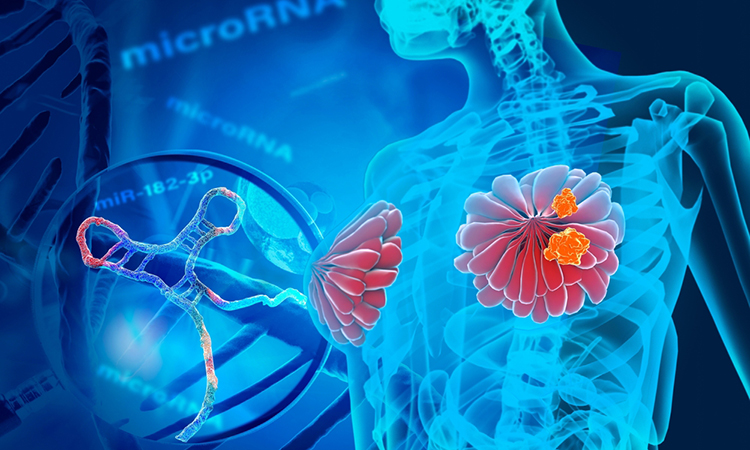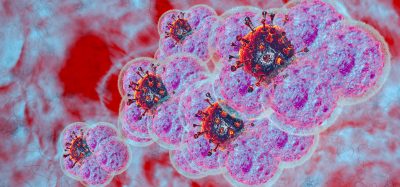Understanding molecular mechanisms behind breast cancer
Posted: 15 February 2023 | Fraser Owen (Drug Target Review) | No comments yet
Oestrogen receptors play a crucial role in breast cancer. By making them therapeutic targets, oestrogen can be regulated with the aim to prevent breast cancer.

According to the National Library of Medicine,1 the development of breast cancer not only involves genetic factors, but also a lifetime exposure to oestrogen.
The molecular mechanisms of oestrogen’s influence on breast tumour formation are poorly understood. While the oestrogen receptor α (ERα) is certainly involved, nonreceptor mediated effects of oestradiol (E2) may also play an important role in facilitating breast tumour development.1
It was estimated that approximately 246,000 women would be diagnosed with breast cancer in the US annually.2 Improved diagnostic and treatment strategies have decreased breast cancer mortality by 25 percent over the past 2 decades,3,4 but the burdens of surgery, radiotherapy, hormonal and chemotherapy are substantial. For this reason, breast cancer prevention represents a major focus of current research. A greater understanding of the molecular mechanisms of carcinogenesis will be required before development of improved strategies for breast cancer prevention.
A new study from Rice University, US, could open the door to new strategies for regulating oestrogen in the body, with the aim to prevent breast cancer and other diseases.
Once an oestrogen receptor binds to a hormone molecule, it manipulates its structure to access a specific DNA site, where it will either enhance or inhibit gene expression. Oestrogen receptors play a crucial role in breast cancer, making them therapeutic targets for tumour growth inhibition.
The new research, published in Proceedings of the National Academy of Sciences, explains the link between the structure of oestrogen receptor alpha proteins and how these receptors function at the molecular level.
“This molecule has two regions or domains that normally are not touching each other,” said Rice theoretical physicist Peter Wolynes. “Instead, they are separated by two string-like structures. The puzzle was, how do these two domains communicate with each other? How is the information that a hormone is bound conveyed to the domain that binds DNA?”
To answer these questions, the Rice scientists used a software called AWSEM to predict the structure and dynamics of proteins.5 They found that oestrogen receptor hormone regulation is controlled by a previously unknown strategy of molecular communication.
“The dominant viewpoint about how protein molecules function has been that they are fairly rigid objects and that their molecular mechanics involved interactions like those in simple machines, using levers and hinges. So, it is strange when you have these string-like structures because they do not seem to work like that,” Wolynes explained.
Wolynes’ previous research uncovered that string-like protein structures can act like the arms of an octopus.
“This stringy octopus’ arm finds something, grabs onto it and then organises itself. That is the mechanism we discovered in previous research, known as fly-casting. It has been seen in many systems.”
In the case of the oestrogen receptor protein, the fact that the different areas of the molecule are connected by two string-like structures made it difficult to account for how the ligand binding domain (region of the molecule that binds to the hormone), communicates with the region of the molecule that attaches to the DNA.
“By doing a simulation of the dynamics of the molecule, what we discovered was that when the ligand binding domain changed its structure, it rotated and moved the strings a little bit farther apart. In so doing, it shortened the strings connecting it to the other domain, bringing it into closer contact with the DNA.” Wolynes described.
Oestrogen receptor mutations are linked to numerous other diseases and types of cancer besides breast cancer.
“It turns out that some of the mutations that disable the oestrogen receptor in cancers occur exactly in this region composed of the string-like structures”. This finding could help reshape understanding of how hormone receptor molecules work more broadly.
“We think that this may be a very common functional mechanism in protein dynamics,” Wolynes elaborated. “There are a lot of other hormone receptors that have a similar organisation of structured domains connected by strings.”
References:
- Yue W, Wang J-P, Li Y, Fan P, Liu G, Zhang N, et al. Effects of estrogen on breast cancer development: Role of Estrogen Receptor Independent Mechanisms [Internet]. International journal of cancer. U.S. National Library of Medicine; 2010 [cited 2023Feb15]. Available from: https://www.ncbi.nlm.nih.gov/pmc/articles/PMC4775086/
- Basic information about breast cancer [Internet]. Centers for Disease Control and Prevention. Centers for Disease Control and Prevention; 2022 [cited 2023Feb15]https://www.cdc.gov/cancer/breast/basic_info/index.htm#:~:text=Each%20year%20in%20the%20United,What%20Is%20Breast%20Cancer%3F
- Wingo PA, Tong T, Bolden S. Cancer statistics, 1995. CA Cancer J Clin. 1995;45:8–30. [PubMed] [Google Scholar]
- Elmore JG, Armstrong K, Lehman CD, Fletcher SW. Screening for breast cancer. 2005;293:1245–56. [PMC free article] [PubMed] [Google Scholar]
- Associative memory, water mediated, structure and Energy Model [Internet]. AWSEM. [cited 2023Feb15]. Available from: https://awsem-md.org/
Related topics
DNA, Molecular Biology, Oncology, Protein, Protein Expression, Proteogenomics, Proteomics, Targets
Related conditions
Breast cancer
Related organisations
National Library of Medicine, Rice University
Related people
Peter Wolynes







